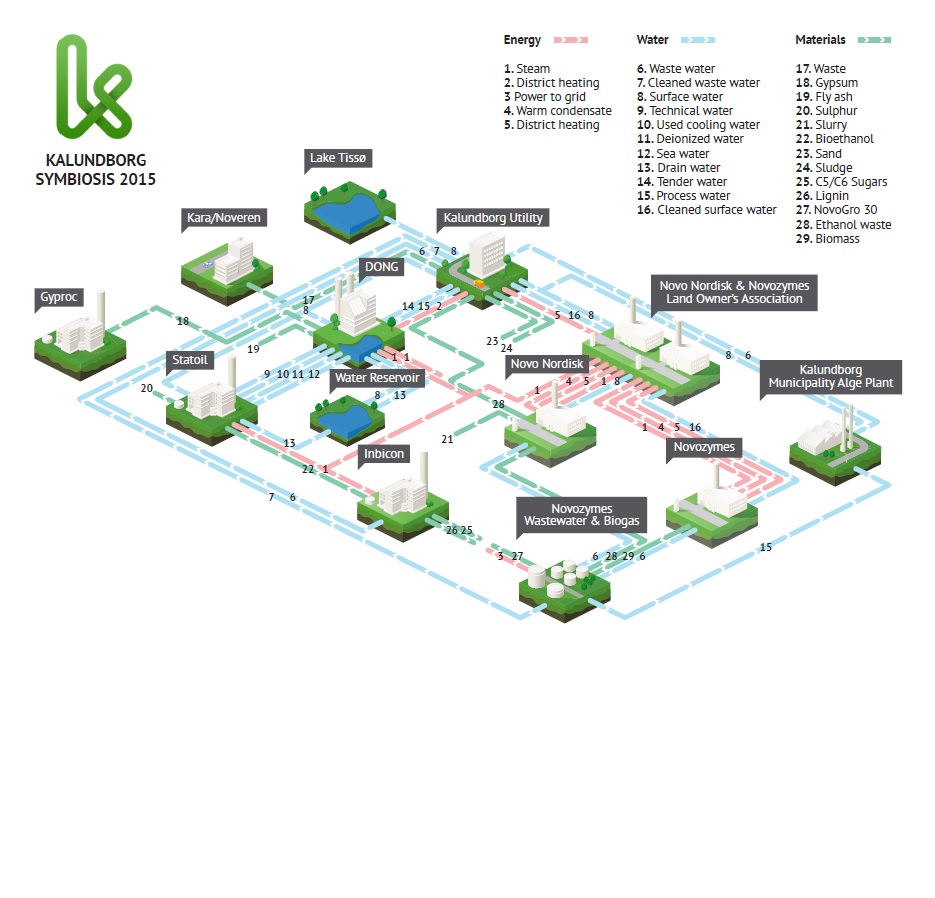Have you ever thought that one’s waste could be a precious resource for somebody else?
This is some kind of naive thought, indeed.
Then why isn’t is applied on a daily basis on large scale production district, so that the by- products of a company x would become the input for company y?
Well, good news, folks! There exists such a place where this concept has been applied to a bunch of private and public companies in Denmark. And it is the first and till now only attempt in the world.
Welcome to Kalundborg
Kalundborg is defined as a industrial ecosystem, where one company’s wastes are turned into resources for another one through a closed cycle of cooperation and buying-and-selling platform.
This “amusement park” wasn’t raised from scratch: it is actually the successful result of a five decades long evolution.
Back in the 60s, Esso (now Statsoil) needed water for its refining process, and then pipelines where built to get the water from the neighbouring lake Tisso. Then gradually a plaster board manufacturing plant, power stations and pharmaceutical companies moved there and step by step attached themselves to the existing infrastructures and facilities; for example: the plastic board facilties was connected to the refinery in order to supply excess refinery gas.
Interestingly, once again, successful innovation has popped out of a casual private initiative, then out of companies’ needs, rather than out of centralised power planning.
Check this video out: http:// https://vimeo.com/27683764
Industrial Symbiosis
Clearly, industrial symbiosis implies that thanks to proximity a flow of still valuable materials can be put on and also that an exchange of information is implemented. Many scientific papers stress out also the social network set of this type of organisation, that ultimately leads to remarkable cost savings. Then, in every sense, a closed loop come out of cooperation.
But looking at measurable sizes, for example, taken from Domenech T. and Davies M.:
Economic parameters of the IS network Investment/ savings
Amount Investments US$ 78.5 mill.
Annual savings US$ 15 mill.
Accumulated savings US$ 310 mill.
Resource/ emission flow SAVINGS per year
Ground water 2,9 mill m3
Surface water* 1,0 mill m3
Liquid sulphur 20,000 Tn
Biomass 319,000 m3
Biomass (yeast slurry) 42,500 Tn
CO2 emissions** 64, 460 Tn
SO2 emissions*** 53 Tn
NOx emissions*** 89 Tn
Waste water **** 200,000 m3
Gypsum 170,000 Tn
Quite impressive numbers, huh?
Find out more at: http://www.symbiosis.dk/en



